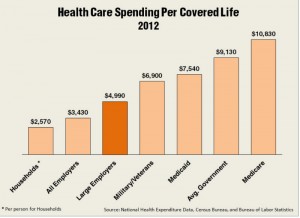Medicare Advantage: Telemonitoring Cuts Hospital Readmissions 44 Percent, ROI $3.30 per Dollar
Geisinger Health Plan has conducted a study of elderly patients enrolled in Medicare Advantage who were treated for congestive health failure. It is reported by Mobihealthnews‘ Jonah Comstock:
A new study from Pennsylvania hospital system Geisinger Health Plan shows that remote monitoring of congestive heart failure patients can reduce readmissions by 38 to 44 percent and produce a return on investment of $3.30 on the dollar.








